socialism in the West
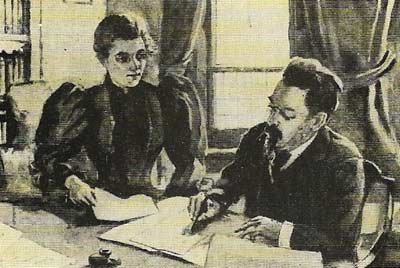
Fiureg 1. Two reformers, Sidney (1859–1947) and Beatrice Webb (1858-1943), adapted socialism to the cause of social reform which they sought to achieve gradually through democratic procedures. They formed the Fabian Society in 1884. It attracted many middle-class and intellectual figures such as George Bernard Shaw. The British Labour Party adopted the ideals of "Fabianism" for its philosophical basis.
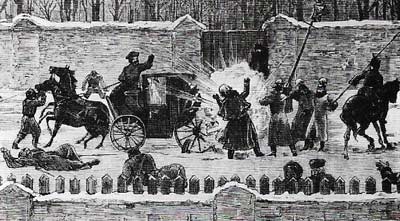
Figure 2. In Russia, anarchism inspired the opponents of the tsarist regime in a campaign of terrorism, including the assassination of Alexander II in 1881. Anarchism grew out of the ideas of Pierre Proudhon (1809–1865) among others. It rejected all authority in its search for a self-governing ideal in which men could totally fulfill themselves. The most famous 19th-century exponents were Russians, especially Mikhail Bakunin and Prince Peter Kropotkin (1842–1921). In France, anarchism became blended with trade unionism, and in Spain anarchist groups played an important part in the political upheavals of the early 20th century including the Spanish Civil War.
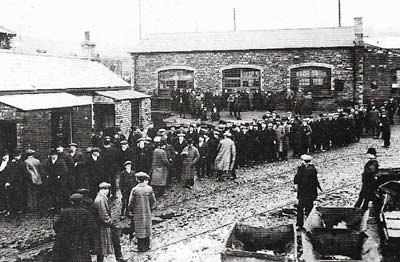
Figure 3. The years before World War I were marked by labor militancy and violent strikes throughout Europe and the USA. In Britain there was a wave of bitter disputes and troops had to be called out in South Wales during the coal strike of 1912. The trouble was caused by the rise of organized labor, the spread of militant ideas and a slight downturn in living standards after a period of improvement.
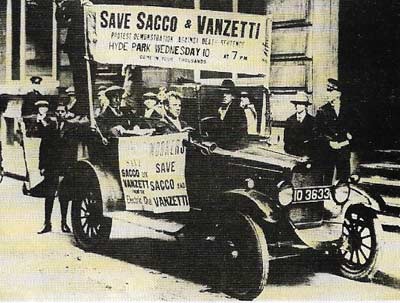
Figure 4. Like these Londoners, liberals everywhere protested in 1927 at death penalties imposed on two US anarchists, Nicola Sacco (1891–1927) and Bartolomeo Vanzetti (1888–1927). Many believed their conviction, for murder, was politically motivated.
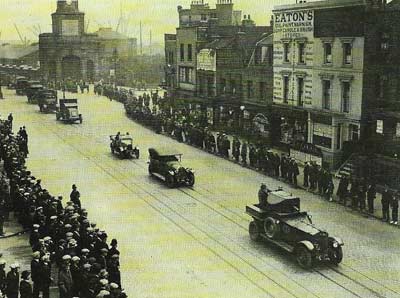
Figure 5. The concept of the general strike became widespread in the early years of the 20th century under the influence of syndicalist ideas. In Britain, the reformist character of the Trades Union Congress, formed in 1868, made it reluctant to use the general strike as a weapon, but in 1926 it called the General Strike in support of a bitter dispute in the coal industry. After a tense confrontation with the Conservative Government of Stanley Baldwin (1867–1947) the strike was defeated. Because of the government's fear that food supplies would be looted, imports were collected from the London docks by armed convoys.
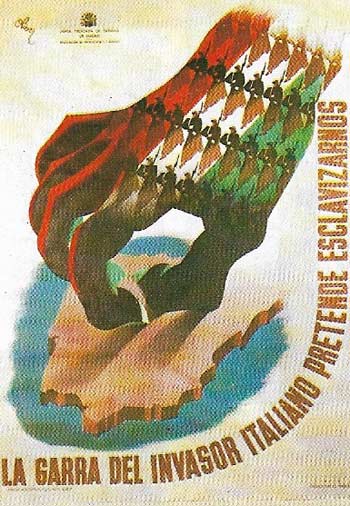
Figure 6. The Spanish Civil War (1936–1939) was a rallying point for left-wing forces in Europe. The attempt by Franco's Nationalist forces to topple the Spanish Republic with aid from Italy and Germany resulted in cooperation between many divided communist and socialist parties. Although the war was a complex battle between various Spanish groups, it seemed to many socialists to symbolize the threat of fascism and the need for a united front.
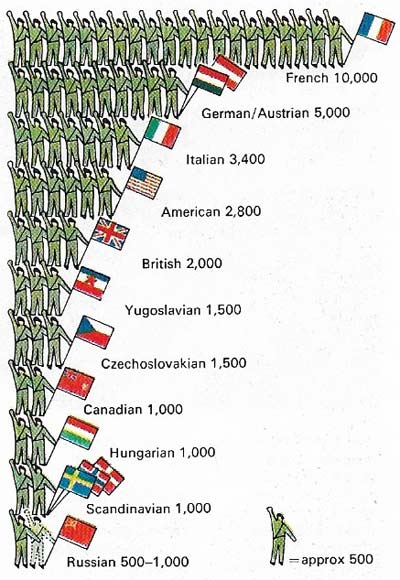
Figure 7. As a result of widespread concern for the Spanish Republic among left-wing groups, the International Brigade was formed to fight in Spain. It was drawn from many different nationalities and consisted mainly of Communist party members, trade unionists and sympathetic intellectuals. The Brigade was recruited through the Communist Party, which organized training, equipment and transport to Spain. The volunteers played an important part in preventing an early victory by Franco's forces and his German and Italian allies, but they suffered heavy casualties. Their role symbolized the wider significance of the civil war and its emotive appeal for a whole generation.
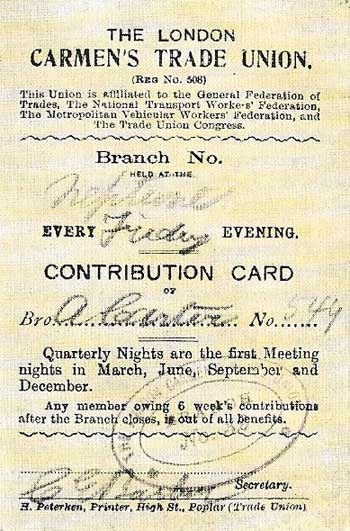
Figure 8. By 1914 the trade union movement, representing millions of working people, with a growing force in the major industrial countries. The years between 1900 and 1914 saw an increase in the number and intensity of union strikes. Generally, employers still disputed the right to strike and often still challenged the unions' right to exist. Bitterness and hostility underlying strikes often led to open violence. However, trade unions were often narrowly sectional in their interests while generally supporting a socialist political stance. Contribution cards, such as this for the Carmen's Trade Union, were proof of a full union membership.
Socialism developed from a group of thinkers, especially Robert Owen (1771–1858), Henri de Saint-Simon (1760–1825), and Charles Fourier (1772–1837), who criticized industrialism because of the suffering and hardship it caused the working class. But it was not until the mid-19th century that socialism developed a mass following as a direct result of the growth of industry in different parts of Europe and the related rise of an urban working class.
Early developments
As the first industrial nation, Great Britain took the lead in the development of workingmen's organizations. Despite legal restrictions and occasional persecution, such as the transportation to Australia of the Tolpuddle Martyrs in 1834 for trade union activity, unions flourished by the middle of the 19th century, especially among skilled workers. The political ideas of this "labor aristocracy" were largely Owenite, emphasizing cooperation and reformist political activity. Attempts to establish a Grand National Consolidated Trades Union had failed by 1834, and following this the Chartist movement attempted to enlist the mass of factory operatives in the cause of political rights, which were enshrined in the "People's Charter", presented to Parliament and rejected three times. Under reformist leaders British trade unions concentrated upon securing gradual concessions in the political and social sphere during the period of prosperity after 1851.
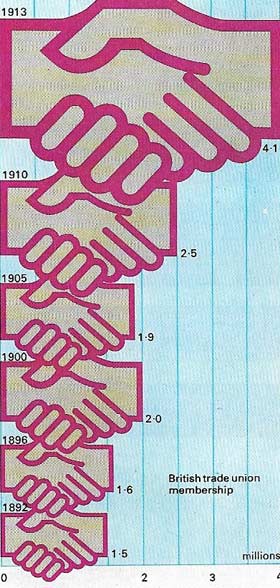 |
| Before 1914 there was a surge in trade union membership because of industrial development. In Britain the number of unionists more than doubled between 1905 and 1914, mainly as a result of the organization of unskilled and semi-skilled workers such as the dockers and railway workers, as opposed to the "labor aristocracy" who had created the unions. In 1893 the independent Labour Party (ILP) was formed, later to become the Labour Party (1906). |
In Europe the slower progress of industrialization hampered the growth of organized socialist movements. Trade unions remained illegal in France until the middle of the 19th century and socialist support was divided between the followers of revolutionary leaders, reformists, and anarchists. Although workers participated in the overthrow of Louis-Philippe (1773–1850) in 1848, there was no organization to unite them. In Germany, too, the workers who supported the revolution of 1848 remained divided and dominated by middle-class liberals. The German risings of 1848 did, however, see the emergence of Marxism in the Communist Manifesto. Written by Karl Marx (1818–1883) and Friedrich Engels (1820–1895), the manifesto provided a coherent intellectual basis for many later socialists.
The First International
Although socialist ideas played little part in the revolutions of 1848, and Chartism was defeated in Britain in the same year, they did mark the emergence of the first important mass movements of workers in Europe. In 1864 socialist groups came together in the First International. Although racked by dissension, the International provided a vehicle for Marxist ideas and encouragement to socialist groups throughout Europe. In France in 1871 the rising of Parisian workers and the lower middle classes in the Commune was proof of the growing strength of socialist ideas. The International was liquidated in 1876, following quarrels between the anarchists and Marx. In the less developed parts of Europe, especially Spain, Italy and Russia, anarchist ideas propagated by Mikhail Bakunin (1814–1876) had a strong appeal and led to risings in Spain and terrorist acts in Russia (Figure 2).
After 1870 the German socialist movement became the most powerful in Europe. In 1890, in spite of laws restricting its operation, the Social-Democratic Party was the largest in the Reich. Although divided between Marxist and "revisionist" groups, the socialists continued their rise up to 1914. In the aftermath of Germany's defeat an alliance between the social-democrats and the army was formed to set up the Weimar government and to frustrate the challenge from the Marxist "Spartacists" led by Karl Liebknecht (1871–1919) and Rosa Luxemburg (1871–1919). In France the socialist movement remained fragmented. French workers turning aside from party politics were attracted to syndicalist ideas of control being achieved by workers through strikes.
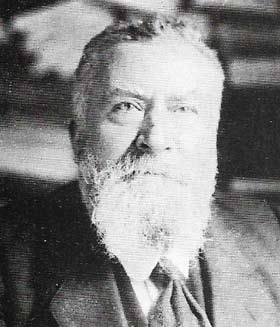 |
| Jean Jaures (1859–1914) was a most eminent French socialist. A successful politician and moderate Marxist, he brought unity to the fragmented socialist groups in France before being assassinated by a fanatic for opposing the war with Germany in 1914. |
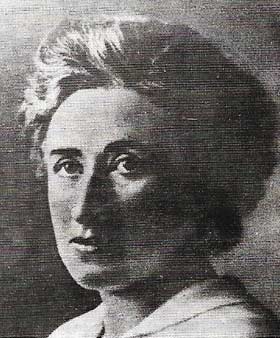 |
| Polish-born Rosa Luxemburg, with Karl Liebknect, led the Marxist "Spartacist" movement which sought to end the 1914–1918 war. They were both assassinated by reactionary troops in Berlin during the revolt of 1918–1919. |
The Second International
The Second International, formed in 1889, was severely divided between reformist and revolutionary groups, and was not strong enough concertedly to oppose World War I. Nonetheless, by 1914 socialism was a powerful political force in Europe and had also spread to Latin America and the United States. Although it was never as strong in the USA as in Europe, a socialist candidate for the presidency, Eugene Debs (1855–1926), polled 900,000 votes in 1912, while the militant Industrial Workers of the World (IWW) mounted a series of bitter strikes. The war caused a breakup of the international socialist movement because its members had to choose between patriotism and allegiance to the socialist ideals.
The Russian Revolution led to a revival of left-wing militancy in the aftermath of World War I, but the inter-war period saw the socialist parties of Britain, France and Germany playing a prominent part in parliamentary politics, and the triumph of socialist parties in Scandinavia. Although the Depression and the rise of fascism led to suppression, as in Germany, Italy and Spain, they also led to a revival of socialism in middle-class and intellectual circles. The Spanish Civil War (Figures 6 and 7) provided a rallying point for the left and the triumph of the Allies in World War II left socialist parties in a prominent position in nearly all the countries of Europe. By 1914 the trade union movement, representing millions of working people, was a growing force in the major industrial countries. The years between 1900 and 1914 saw an in-crease in the number and intensity of union strikes. Generally, employers still disputed the right to strike and often still challenged the unions' right to exist. Bitterness and hostility underlying strikes often led to open violence. However, trade unions were often narrowly sectional in their interests while generally supporting a socialist political stance. Contribution cards, such as this for the Carmen's Trade Union, were proof of full union membership.
